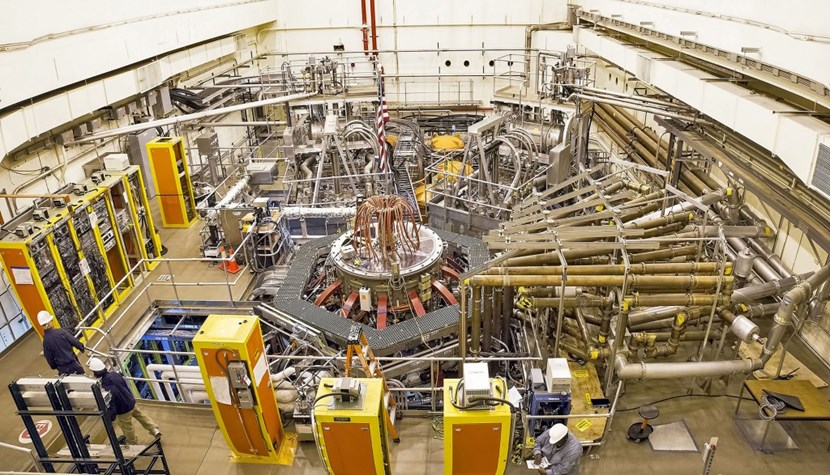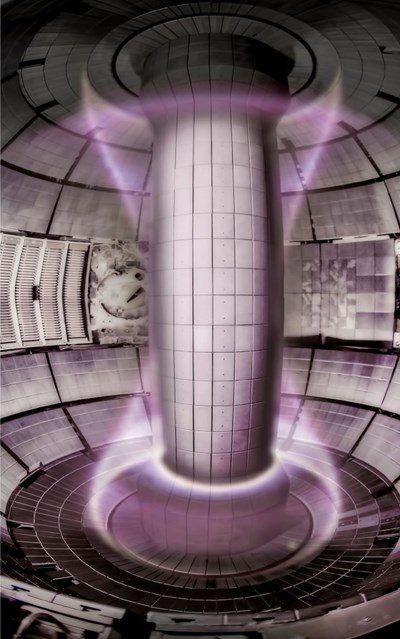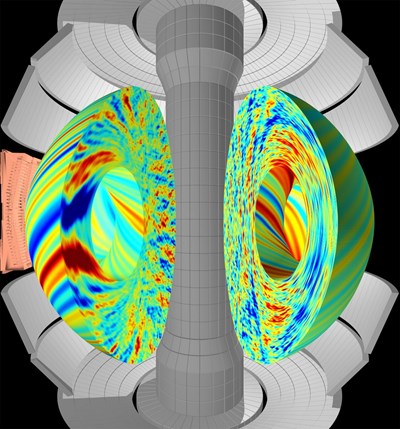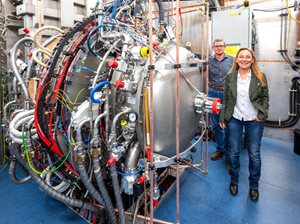
PPPL's National Spherical Torus Experiment-Upgrade (NSTX-U) is shaped more like a cored apple than the doughnut-like shape of more widely used conventional tokamaks. The compact design of the spherical tokamak allows it to produce the essential plasma conditions for fusion energy — the same energy that drives the sun and stars — with relatively low and cost-effective magnetic fields. This economical design makes the NSTX-U a strong candidate to serve as the model for a fusion pilot plant. Credit: Elle Starkman / PPPL Office of Communications
As construction began on the

An image showing glowing plasma around the central magnet that runs down the middle of NSTX-U as the backbone of the machine. Once installed, the component will perform a dual role: it will start and maintain the current that generates the plasma that fuels fusion reactions and complete the magnetic field that keeps the plasma bottled up. Credit: Elle Starkman / PPPL Office of Communications
After promising initial results at the prototype spherical tokamak

A computer-generated image showing plasma turbulence, the unwanted bubbling and roiling that moves heat from the plasma core to the edge and interferes with the crucial fusion reactions. Image: NSTX-U render, Walter Guttenfelder, Filippo Scotti
NSTX-U's results will also be directly relevant to burning plasmas such as those expected in ITER and a tokamak-based fusion power plant. In a burning plasma, the plasma self-sustains through "alpha heating"—a term that describes when the newly created helium atoms (alpha particles) continue the heating process by colliding into the deuterium and tritium particles in the plasma. These energetic alpha particles, however, can excite what are known as 








